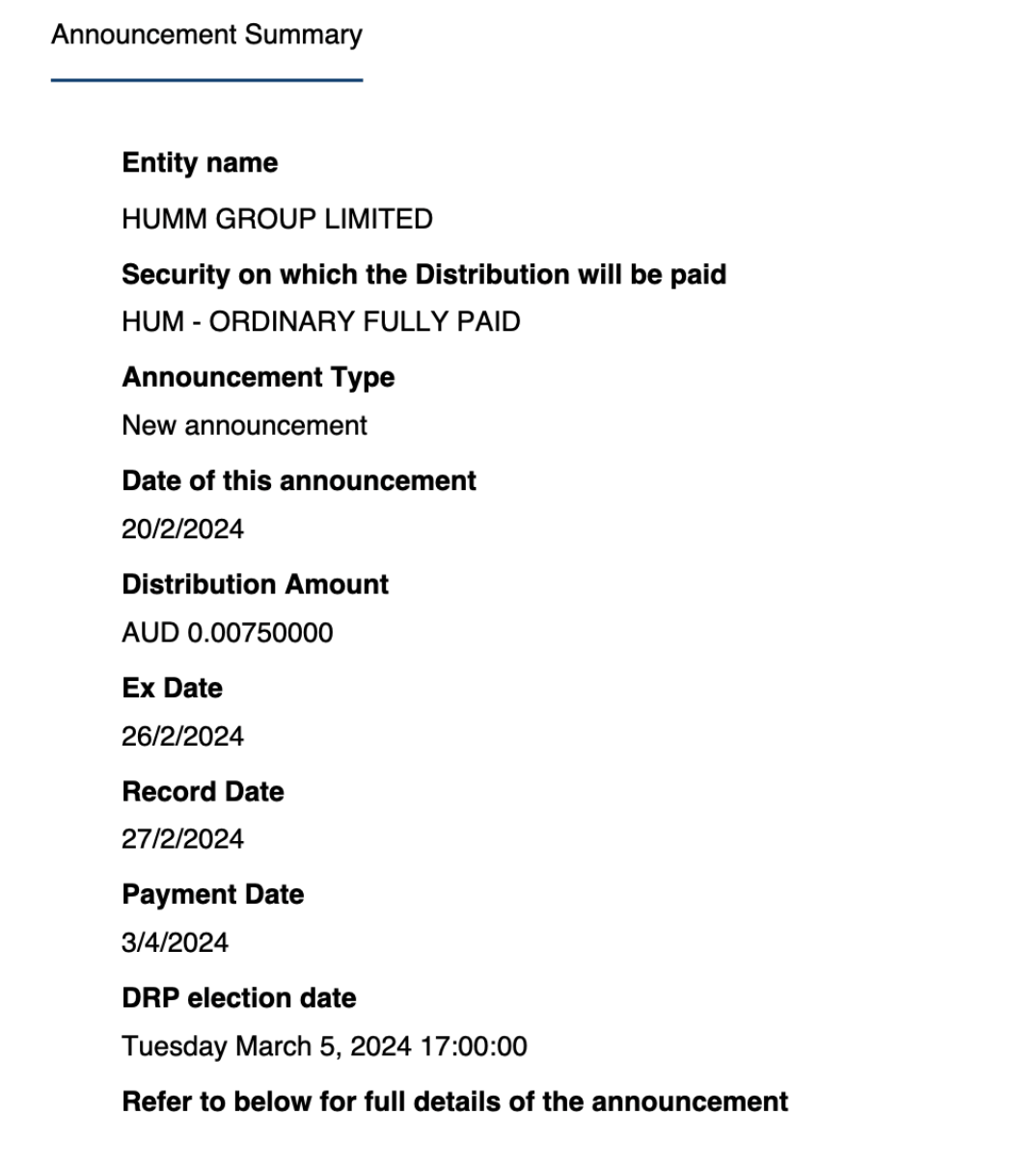Ex-dividend date: Why should you care and how it can affect your stock’s price

What is ex-dividend and why should you care? Picture Getty
- It’s the half year season, which means dividend time for investors
- What is ex-dividend and why should you care?
- Can you make profits out of this?
It’s that time of the year again when interim ASX dividends are declared and paid to loyal shareholders.
In the small cap sector, the top 20 dividend payers, based on the latest dividend yields, are listed below:
**All data from Commsec.
| Code | Name | Div Yield | Current Div | Div payout ratio | Franking |
|---|---|---|---|---|---|
| TER | Terracom | 80.80% | $0.03 | 64% | 100% |
| BSE | Base Resources | 32.80% | $0.04 | 305% | 0% |
| HZN | Horizon Oil | 21.90% | $0.02 | 86% | 0% |
| ASH | Ashley Services | 16.20% | $0.03 | 81% | 100% |
| TOT | 360 Capital REIT | 14.60% | $0.02 | 94% | 100% |
| FSF | Fonterra | 14.30% | $0.32 | 0% | 0% |
| OMH | OM Holdings | 12.90% | $0.02 | 10% | 0% |
| PTM | Platinum Asset Management | 12.90% | $0.07 | 100% | 100% |
| ECF | Elanor Commercial Property | 12.90% | $0.02 | 186% | 0% |
| ABG | Abacus Group | 12.70% | $0.04 | 349% | 0% |
While the concept of dividends is widely understood, what’s (perhaps) baffled some investors is the mechanics surrounding Ex-Dividend date, and how that impacts the share price.
So first things first, what is Ex-Dividend date?
The ex-dividend date is the date on or after which a buyer of a stock is not entitled to receive the declared dividend.
In other words, it’s a cut off date for would be investors to receive the current dividend payments.
ASX listed companies must report their dividend payments information to the ASX.
Here’s an example of a dividend declaration:

Related to the ex-dividend date is what’s called Record Date.
In the example above, the ex-dividend date is 26 February, and the record date is 27 February.
The record date is basically the date (usually at 5pm sharp) the company closes its share register to determine which shareholders are entitled to receive the current dividend. It is the date where all changes to registration details must be finalised.
What happens if you buy the stock before, on, or after ex-divvy date?
If you buy a stock before the ex-dividend date (called cum-dividend), you will receive the already-declared dividend payment.
Even if you bought it just one day before the ex-dividend date, you will still receive the dividend payments in full.
But if you think you’ve come into some sort of windfall, think again, because the stock’s price will fall by a corresponding amount on ex-divvy day, wiping out your gains (more on this later).
If you buy the stock on or after the ex-divvy date, you will not be entitled for the current period’s payments.
But the stock price will have adjusted lower accordingly, so you can buy the stock at a lower price (see more below).
What happens if you sell your shares before ex-divvy date?
This is a simple one.
If you sell your shares before the ex-dividend date, you’re basically selling away your right to the upcoming stock dividend.
How much does the stock price fall on ex-dividend date?
It’s not so much that it falls on ex-divvy date, but more of an adjustment.
The stock price will undergo a single adjustment by the amount of the dividend.
For example, if the dividend declared was 10c a share, then the stock price will adjust downward by 10c on ex-dividend date.
Obviously there are other market factors/news that could move the stock price on the day, meaning that it could drop lower than 10c, or even move higher.
But that -10c adjustment is already locked in.
Can you game the system and make a profit out of all this?
Day traders are known to use a strategy called the Dividend Capture Strategy to take advantage of the dividend payments and subsequent stock price moves.
It goes like this: the day trader buys the stock just before ex-dividend date, simply to receive the dividends. They will then sell it sometime after ex-dividend to hopefully make capital gains.
In short, this strategy doesn’t work, because as we’ve said before, the stock price will drop by the same amount of the dividend payment. The trader would have to wait until the stock price moves back up to make capital gains.
This strategy is related to a tax avoidance strategy termed dividend stripping by tax authorities.
Essentially dividend stripping provides the investor with a dividend income, but the trader would make sure that the stock is sold at a loss on or after ex-divvy date.
For tax purposes, this loss can then theoretically be offset with the capital gain profits in the portfolio, potentially creating a net zero or even tax gain for the investor.
Obviously Stockhead does not endorse this strategy, and the ATO has also tried to close this loophole by introducing the 45-Day Rule – meaning that people can only be entitled to Franking Credits if they sell the stock 45 days after dividends are paid.
Related Topics
UNLOCK INSIGHTS
Discover the untold stories of emerging ASX stocks.
Daily news and expert analysis, it's free to subscribe.
By proceeding, you confirm you understand that we handle personal information in accordance with our Privacy Policy.








